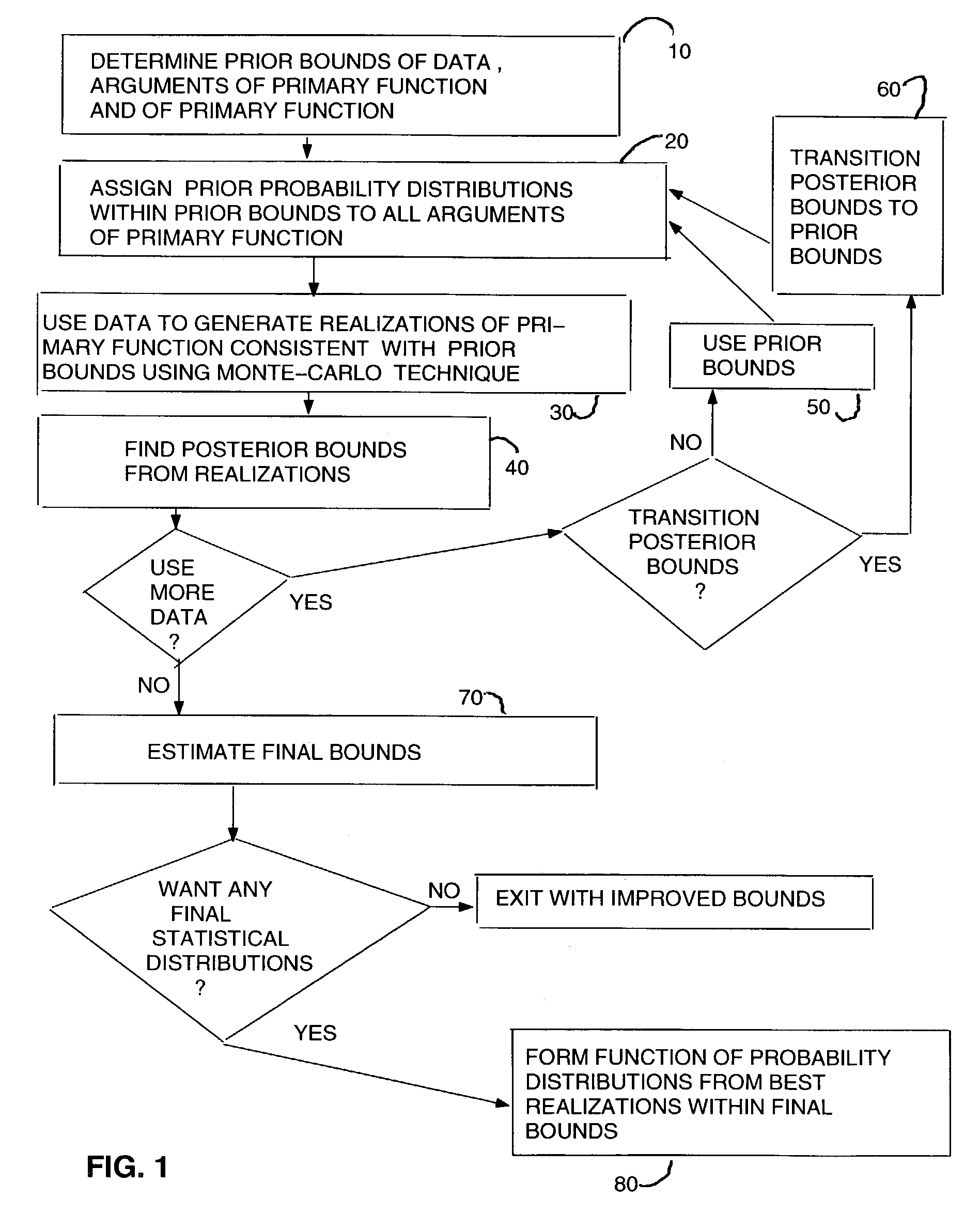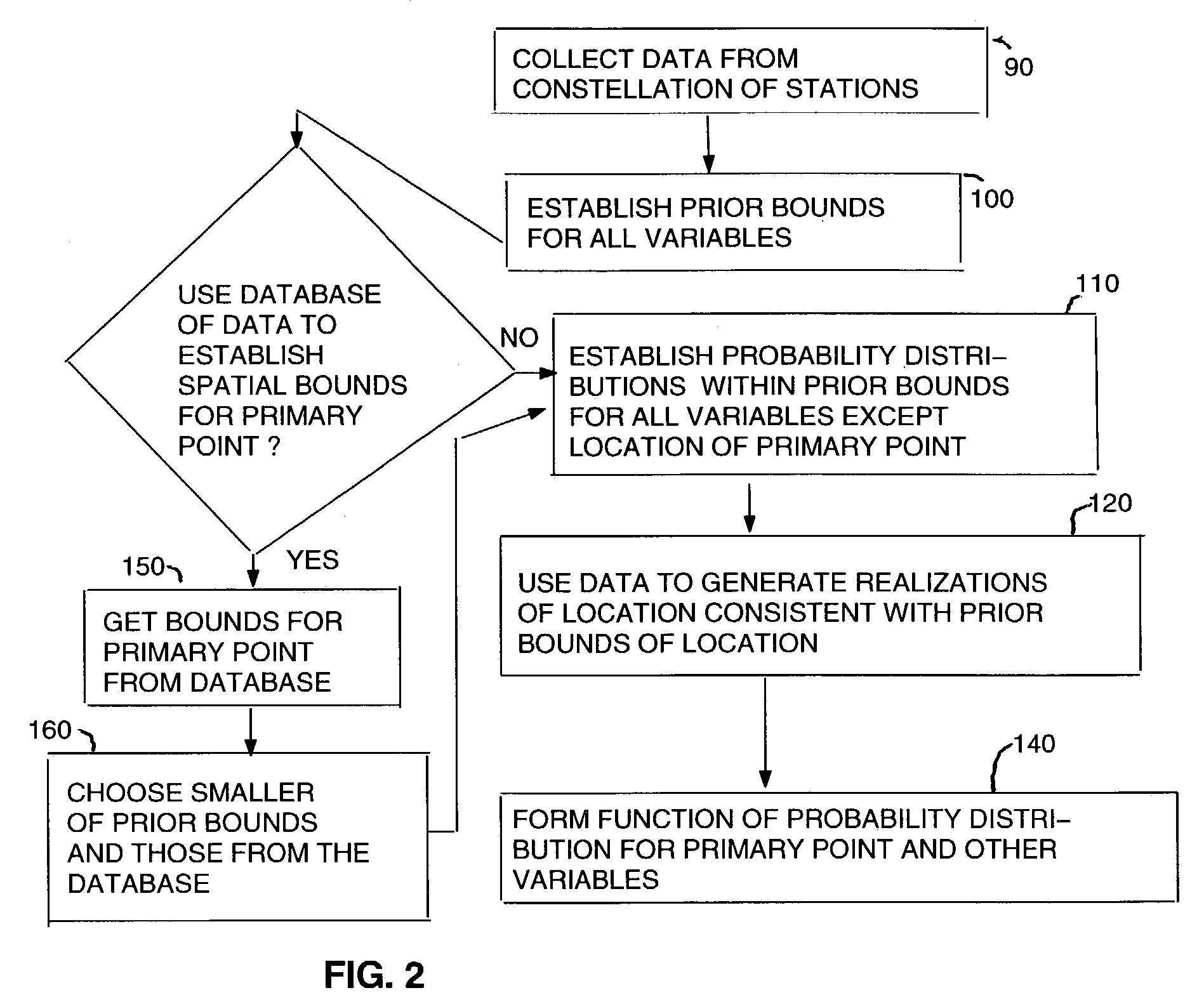Estimation algorithms and location techniques
a technology of estimation algorithms and location techniques, applied in position fixation, wave based measurement systems, instruments, etc., can solve the problems of inability to provide a method of solving, inability to understand the geometry of the procedure, and relatively high computational burden of procedures, so as to facilitate an analytical solution and facilitate an understanding of the geometry
- Summary
- Abstract
- Description
- Claims
- Application Information
AI Technical Summary
Benefits of technology
Problems solved by technology
Method used
Image
Examples
first experiment
1. First Experiment
[0185]An experimental example is given for hyperbolic and isodiachronic locations.
[0186]On Jun. 24, 1991, eight microphones were set up at the inventor's house at 15 Redwing Terrace, North Falmouth, Mass. Signals from the microphones were cabled to a PC were the signals were digitized. Acoustic signals were played from an audio speaker at Cartesian coordinate (11.07±0.05, 14.67±0.05, −4.82±0.13) m. The coordinates of the eight microphones were (0,0,0), (20.064, 0, −4.947), (32.876, 13.637, −4.649), (17.708, 22.766, −4.479), (1.831, 15.718, 0.951), (19.888, 9.177, −4.570), (13.710, 6.437, −0.518), and (28.982, 18.491, −6.515) m. The locations were measured optically and were accurate within ±0.1 m horizontally and ±0.026 m vertically. The relative humidity was about 55% and the temperature was about 23.5° C., given a speed of sound of about 347 m s−1. The speed of the wind was less than 1 m s−1. The speaker emitted a narrowband signal near 1700 Hz with a bandwidth ...
second experiment
2. Second Experiment
[0190]On Jun. 4, 1995, five omni-directional microphones recorded sounds from a Redwing Blackbird, in Port Matilda, Pa. (Bird B1 in FIG. 3 of Spiesberger, Journal Acoustical Society America, Vol. 106, 837–846, 1999). Isodiachronic location is done using published data (Table 2 in Spiesberger, 1999). The reference speed of sound is 344 m / s. A priori distributions of other variables are taken to be Gaussian and truncated at one standard deviation. The standard deviations for the differences in travel times is 0.000067 s. The standard deviation of the speed of sound is 2 m / s. The standard deviation of each horizontal component of the wind is 2 m / s. The standard deviation of the vertical component of the wind is 0.5 m / s. The standard deviation of the travel time due to the straight path approximation is 0.1 μs. The standard deviation of each Cartesian coordinate of a receiver is 0.05 m / s except as follows.
[0191]Receiver one is defined to be at the origin without erro...
PUM
 Login to View More
Login to View More Abstract
Description
Claims
Application Information
 Login to View More
Login to View More - R&D
- Intellectual Property
- Life Sciences
- Materials
- Tech Scout
- Unparalleled Data Quality
- Higher Quality Content
- 60% Fewer Hallucinations
Browse by: Latest US Patents, China's latest patents, Technical Efficacy Thesaurus, Application Domain, Technology Topic, Popular Technical Reports.
© 2025 PatSnap. All rights reserved.Legal|Privacy policy|Modern Slavery Act Transparency Statement|Sitemap|About US| Contact US: help@patsnap.com



